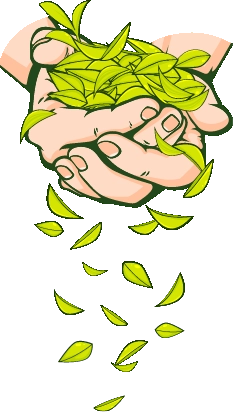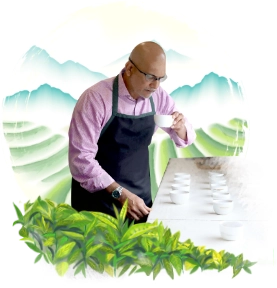Tea Cultures and Ceremonies: Chinese Tea Ceremonies
Tea is the only drink in the world that has transcended beyond its functional benefits and uses as a beverage. Over five centuries, the stature of tea has got elevated to mystical heights, uplifted by timeless traditions and rituals. It is these very traditions that have created an unmistakably unique culture of tea and ceremonies around the world, which are as revered and as respected today as they were in the centuries ago.
Tea is the second most consumed beverage in the world after water. From humble origins in China in 2,737BC, tea has always been an integral part of life and lifestyle across five millennia. From Buddhist monks to powerful emperors, the unassuming tea leaf has always been associated with peace and tranquility, with style and sophistication and with religion and rituals. From the Chinese to the Japanese and from Russians to the English, everywhere that tea travelled, it has created a rich cultural legacy of tradition, rituals and ceremonies.
We start discussion with tea culture in China, Japan and Russia, and will keep adding more myriad tea cultures in the days to come.
Tea is the second most consumed beverage in the world after water. From humble origins in China in 2,737BC, tea has always been an integral part of life and lifestyle across five millennia. From Buddhist monks to powerful emperors, the unassuming tea leaf has always been associated with peace and tranquility, with style and sophistication and with religion and rituals. From the Chinese to the Japanese and from Russians to the English, everywhere that tea travelled, it has created a rich cultural legacy of tradition, rituals and ceremonies.
We start discussion with tea culture in China, Japan and Russia, and will keep adding more myriad tea cultures in the days to come.
Cha Dao
Cha Dao (the way of tea) is at the heart of Chinese tea culture. The origins of Cha Dao can be traced back to the Tang dynasty. Tea ceremony is an integral part of Cha Dao (and many a times confused as being Cha Dao) began in the 8th century AD when Tao Lu Yu wrote the masterful treatise on tea – Cha Ching or The Tea Classic. It is in Cha Ching that Tao Lu Yu meticulously described a set of 24 tea wares that are necessary to make a perfect cup of tea. Soon, people started making tea using the proper tea ware and equipment, instead of cooking or boiling the tea leaves, and this is the origin of the tea ceremony that we are so familiar with today.
In the Chinese culture, tea is symbolic of respect, apology and gratitude. When younger generation offers tea to the older generation, or takes them out to a tea-house, it symbolizes respect. Offering tea to someone who has been wronged is indicative of a sincere apology. During a wedding, the bride and the groom offer their parents tea as part of the wedding ritual to convey their gratitude and thanks.
Gongfu Tea Ceremony
Also known as Kung Fu tea ceremony, Gongfu tea ceremony is the most famous of all Chinese tea ceremonies. It started in the Song Dynasty (960-1279) in the Chaoshan region in Guangdong Province.
Gongfu means the art of doing something well. At the heart of the Gongfu tea ceremony is the proper usage of tea ware and precise making of the tea.
As far as tea ware is concerned, the essentials are :
- A Yixing teapot, made from Yixing clay
- Alternatively, a porcelain teapot or a gaiwan – a bowl with lid and saucer to infuse tea
- A tea pitcher or chahai
- A brewing tray, preferably perforated, for the spilled water to seep through
- A tea towel or cloth
- A teaspoon or tea pick to clear the teapot spout and clear tea leaves.
- Tea cups
- Tea strainer
The brewing process :
- Boil water and pour this over the teapot, the strainer and cups to sterilise and warm them
- Pass the loose, dry tea leaves to your guests so they can appreciate the quality and flavour of the tea
- Add tea leaves into the tea pot using the tea spoon till about a third of the pot is filled
- Pour water at correct temperature to the tea pot. Ideally, the water should be poured from shoulder-height, lowering and raising the kettle three times to symobilze three bows to the guests.
- Once the tea pot is filled, cover it with lid and pour some more hot water over the surface of the tea pot.
- It is here that the perforated tray is useful, as it allows all spilled water to collect in a lower tray
- After about 30 seconds, pour out the infused water and discard it. This is called ‘washing’ the tea leaves of harshness, bitterness and impurities.
- Now, pour water at the right temperature again over the ‘washed’ tea leaves
- Allow this to brew for 3-5 minutes, depending on the tea
- Next, pour all the tea into a tea pitcher or Chahai
- From the Chahai, gently pour the tea into guests’ cups
- Immediately, pour some more water at right temperature into the tea pot for the second brewing, which will take about a minute or two longer than the first brewing.
- Guests lift their cups with both hands, and finish the tea in three sips, the first being the smallest and the last being the biggest. With each sip, the subtle flavour, the delicate aroma and the fine taste is savoured and appreciated.
- After the first round is over, the second round is served from the second brewing
Other Chinese Tea Ceremonies
While Gongfu is the most popular of Chinese tea ceremonies, here are some more :
Wu-Wo Tea Ceremony
A fairly recent concept that started about 300 years ago in the Mind dynasty, Wu-Wo comes from the ancient Sanskrit word meaning without or devoid of self. Participants bring their own tea ware : the tea pot with tea leaves inside, tea cups, etc. Everyone is treated as an equal and there is no ranking or order based on knowledge, status or wealth. Each person makes tea and serves to three people on the left. Multiple rounds are served, after which, the participants pack up their tea ware, marking the end of the ceremony.
Jing Cha or The Wedding Tea Ceremony
Serving tea to in-laws is a traditional and formal ritual of a Chinese wedding. The newly wed wife and husband offer tea to parents-in-law and start to call them mother and father, signifying a formal welcome and becoming part of the family. In turn, in-laws give red envelopes to the son or daughter in-law with money as an auspicious beginning. In Jing Cha the tea sets should be red with auspicious patterns.
Tōcha or Tea Contest
During the Song Dynasty (960-1279), Tōcha was a popular contest or a game where renowned scholars, tea connoisseurs and tea experts would gather at a tea house. The tea house for Tōcha usually had two floors. The guests would be invited to the second floor. They would generally drink ten cups of tea of four varieties and then try and ascertain exact details like the growing region, the season, the production technique and other intricacies about the tea. The winner of Tōcha was awarded with numerous prizes and gifts.
General Etiquettes for Chinese Tea Ceremony
For Guests
- Receive the tea cup with both hands when being served with tea to show gratitude respect and humility
- Keep showing admiration and respect when smelling the tea leaves or when sipping the tea
- Take a small sip of tea and never drink the entire cup in one gulp
For Hosts
- Serve the tea with both of your hands
- Never fill the tea cup to the brim. Lest hot tea accidently spills
- Fill the guests’ cups in time
- Dress neatly and decently.

Tea is a religion in the art of life.

